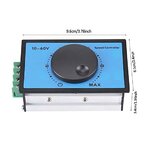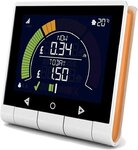- Nov 11, 2009
- 25,460
- 9,292
- 50,935
Domestic double glazing is filled with a noble gas not air. It is denser than air and the rate of heat loss is reduced compared to if air was used.I understand the logic of the ventilation system, but houses are not ventilated any where near the same degree as caravans. I have often thought (but might be wrong) that there is such extreme ventilation to help a flow of air and keep damp away when the van is left unused over long periods of time during the winter.
Acrilic is a far better insulator than glass. Most of the benefit of double glazing is down to the air gap between panes, this prevents direct heat conduction. An acrylic/air gap/acrylic window should be a better insulator than a glass/air gap/glass. Assuming the air gap is the same. The optimum air gap for double glazing is 12mm. I suspect the gap is bigger in caravan glazing. I had to have a front caravan window replaced because the outer pane had been deflected inwards and the panes repeatedly touching caused the plastic to have internal markings. Done under guarantee.
Last edited:



